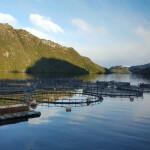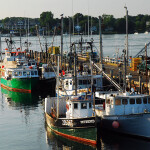U.S. Gulf of Mexico marine researchers are urging federal and state agencies to fund long-term studies regarding the effect of the BP/Deepwater Horizon oil spill on microorganisms and seafood species living in the Gulf. To that end, scientists at the University of Southern Mississippi in Ocean Springs and at Tulane University in New Orleans have already discovered oil in the postlarvae of blue crabs along the U.S. Gulf Coast, and want to find out more about the long-term impacts of oil on blue crab supplies in the region.
SeafoodSource recently spoke with Harriet Perry, director of USM's Center for Fisheries Research and Development, about the center's current and future research.
Blank: Explain the Center's findings concerning oil in crab.
Perry: We have found droplets of hydrocarbons or oil in blue crab and fiddler crab larvae, from Grande Isle, La., to Pensacola, Fla. The oil appears to be trapped between the hard, outer shell of the crab and its inner skin. We sent samples to an independent lab in Florida, which confirmed the presence of hydrocarbons, and the Tulane samples are currently being analyzed. My guess is that the crab picked up this oil offshore while in the [postlarval] stage, and brought the oil with it when it came back to the marsh.
What do these findings mean for future blue crab supplies?
The biggest concern when we found the oil droplets is that the animals pick those up offshore over the larval grounds, and may be bringing the oil from offshore to onshore. From estimates and looking at daily oil coverage from satellite information, about 40 percent of our larval grounds were covered with oil at the high point. However, we have had very few marsh areas impacted in Mississippi. The crab we studied were alive and fine, but there is a real worry that we might see diminished recruitment for the next season. This is the peak of the season right now; we have to get through that, and we will be able to do some assessments. The caveat is that we continue to monitor the sub-lethal and chronic effects of oil on these organisms; there may be a year or two of diminished harvests.
Are some people worried that these findings mean that there is oil in Gulf seafood that people are consuming?
This issue needs to be separated from food safety. The oil droplets are not ingested; they get wedged underneath the shell, through the physical mechanism of swimming. The agencies have not found any oil in any of the seafood species, and they test constantly. Oil does not bio-accumulate in the food chain like heavy metals do. It does not magnify as it goes up the food chain. If exposed over a long period of time, or in large doses, fish might start to store oil in tissues and organs, such as their liver. However, it is not stored in the flesh of fish or shellfish. But, chronic exposure causes problems, so we have to do our due diligence and carefully monitor [finfish and shellfish].
What type of research on oil and Gulf marine life is needed in the future?
Years later, Alaska is still finding effects from the [Exxon Valdez] oil spill. We need to monitor and keep pressure on agencies that fund this kind of research. I really encourage agencies to increase money to the Gulf. We have been historically under-funded. This spill is precisely the reason that states need to have [monitoring], so we can assess changes in the population.






